
A planetarium is a theatre built primarily for presenting educational and entertaining shows about astronomy and the night sky, or for training in celestial navigation.
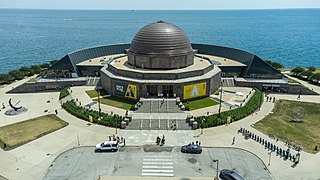
The Adler Planetarium is a public museum in Chicago, Illinois, dedicated to astronomy and astrophysics. It was founded in 1930 by local businessman Max Adler. Located on the northeastern tip of Northerly Island on Lake Michigan, the Adler Planetarium was the first planetarium in the United States. It is part of Chicago's Museum Campus, which includes the John G. Shedd Aquarium and The Field Museum. The Planetarium's mission is to inspire exploration and understanding of the universe.

Stardome Observatory is a public astronomical observatory situated in Maungakiekie/One Tree Hill Domain in Auckland, New Zealand.

Griffith Observatory is an observatory in Los Angeles, California on the south-facing slope of Mount Hollywood in Griffith Park. It commands a view of the Los Angeles Basin including Downtown Los Angeles to the southeast, Hollywood to the south, and the Pacific Ocean to the southwest. The observatory is a popular tourist attraction with a close view of the Hollywood Sign and an extensive array of space and science-related displays. It is named after its benefactor, Griffith J. Griffith. Admission has been free since the observatory's opening in 1935, in accordance with the benefactor's will.

The Fernbank Science Center is a museum, classroom, and woodland complex located in Atlanta. It is owned and operated by the DeKalb County School System, which announced in May 2012 it was considering closing the facility to cut its annual budget, then quickly shelved the plan after public outcry. The nearby Fernbank Museum of Natural History is a private non-profit organization that is separate from the Science Center.

The Saint Louis Science Center, founded as a planetarium in 1963, is a collection of buildings including a science museum and planetarium in St. Louis, Missouri, on the southeastern corner of Forest Park. With over 750 exhibits in a complex of over 300,000 square feet (28,000 m2), it is among the largest of its type in the United States.
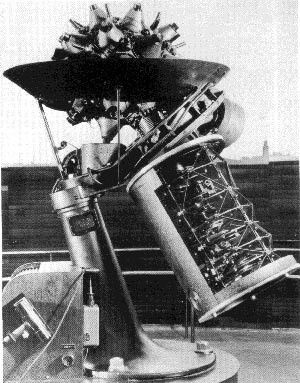
A Zeiss projector is one of a line of planetarium projectors manufactured by the Carl Zeiss Company. Main models include Copernican (1924), Model I (1925), Model II (1926), Model III (1957), Model IV (1957), Model V (1965), Model VI (1968), Spacemaster (1970), Cosmorana (1984), Skymaster ZKP2 (1977), and Skymaster ZKP3 (1993).
UNA Observatory is an astronomical observatory owned and operated by the University of North Alabama. It is located in Florence, Alabama (USA). It has 2 telescopes, a Celestron 0.35 m Schmidt–Cassegrain telescope. The UNA Planetarium is a 65-seat planetarium with a Spitz A3P projector and East Cost Control Systems controller.

The McLaughlin Planetarium is a former working planetarium whose building occupies a space immediately to the south of the Royal Ontario Museum in Toronto, at 100 Queen's Park. Founded by a grant from philanthropist Colonel R. Samuel McLaughlin, the facility was opened to the public on October 26, 1968. It had, for its time, a state-of-the-art electro-mechanical Zeiss planetarium projector that was used to project regular themed shows about the stars, planets, and cosmology for visitors. By the 1980s the planetarium's sound-system and domed ceiling were used to display dazzling music-themed laser-light shows. The lower levels of the planetarium contained a gallery called the "Astrocentre" that featured space-related exhibits, related artifacts on the history of astronomy and was also home of the world's first commercial Stellarium
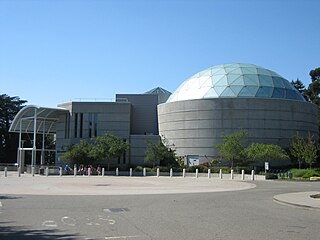
Chabot Space and Science Center, located in Oakland, California, is a center for science learning featuring interactive exhibits, planetariums, a large screen theater, hands-on activities and three powerful telescopes.

The Rose Center for Earth and Space is a part of the American Museum of Natural History in New York City. The Center's complete name is The Frederick Phineas and Sandra Priest Rose Center for Earth and Space. The main entrance is located on the northern side of the museum on 81st Street near Central Park West in Manhattan's Upper West Side. Completed in 2000, it includes the new Hayden Planetarium, the original of which was opened in 1935 and closed in 1997. Neil deGrasse Tyson is its first and, to date, only director.
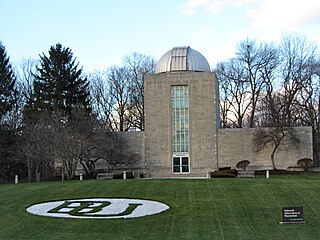
Holcomb Observatory and Planetarium is a part of Butler University in Indianapolis, Indiana.

The Archenhold Observatory was named in honour of Friedrich Simon Archenhold, is an observatory in Berlin-Treptow. It houses the Großer Refraktor, which is the longest pointable telescope in the world. It is also called the Himmelskanone.

The Planetarium of the Royal Observatory of Belgium is a Belgian planetarium on the Heysel Plateau in Brussels and part of the institutions of the Belgian Federal Science Policy Office.
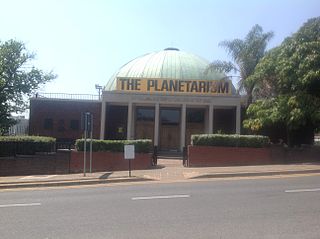
The Johannesburg Planetarium is a planetarium owned by the University of the Witwatersrand, located on the University's East Campus in Braamfontein, Johannesburg. It was the first full-sized planetarium in Africa, and the second in the southern hemisphere.
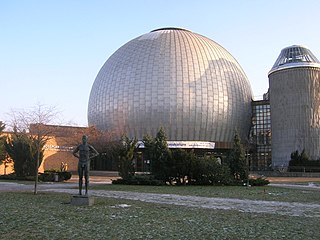
The Zeiss Major Planetarium is a planetarium in Berlin, and one of the largest modern stellar theatres in Europe. It is located on the borders of the Ernst-Thälmann-Park housing estates in the Prenzlauer Berg locality of Berlin.

Jakarta Planetarium and Observatory is a public planetarium and an observatory, part of the Taman Ismail Marzuki art and science complex in Jakarta, Indonesia. The planetarium is the oldest of the three planetaria in Indonesia. The second planetarium is located in Surabaya, East Java. The third planetarium is located in Kutai, East Kalimantan.
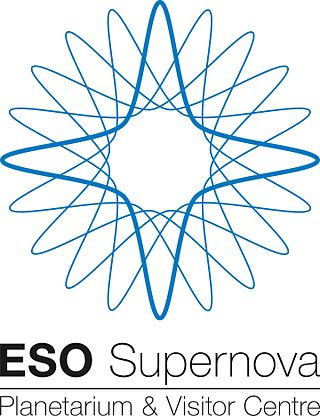
The ESO Supernova Planetarium & Visitor Centre is an astronomy centre located at the site of the European Southern Observatory (ESO) Headquarters in Garching bei München. It offers exhibitions, guided tours and planetarium shows that feature observations made by the telescopes of the European Southern Observatory.

The Professor Aristóteles Orsini Planetarium, also known as the Ibirapuera Planetarium, is a planetarium in Ibirapuera Park, São Paulo. It opened in January 1957, and was the first planetarium in Brazil and Latin America. It is one of three planetaria in São Paulo, with the others being Carmo Planetarium and the Johannes Kepler Planetarium at Sabina Escola Parque do Conhecimento.
Science tourism is a travel topic grouping scientific attractions. It covers interests in visiting and exploring scientific landmarks, including museums, laboratories, observatories and universities. It also includes visits to see events of scientific interest, such as solar eclipses.





















